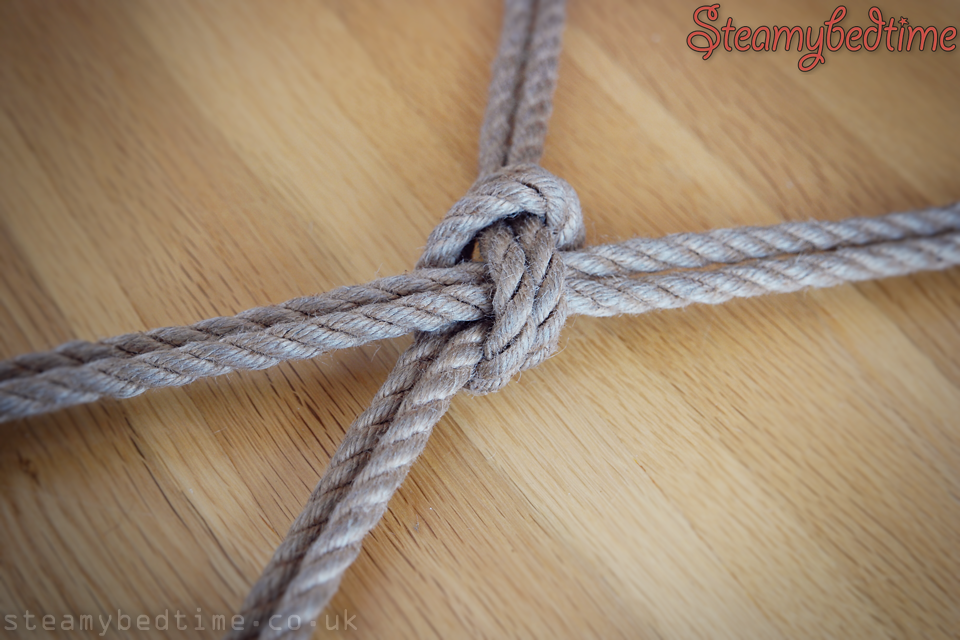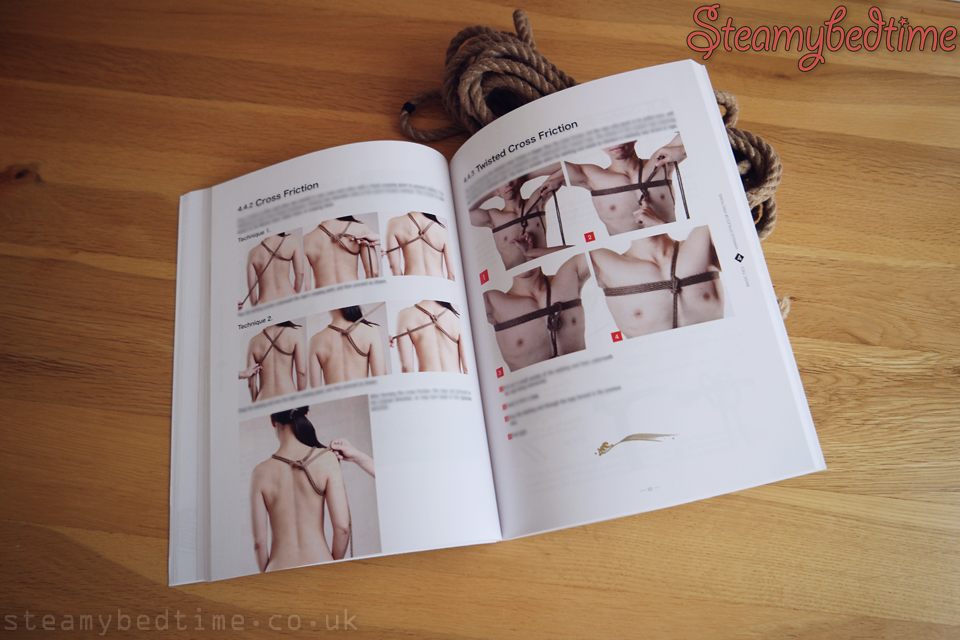Week 10 of 52 : Cross Friction and Twisted Cross Friction
In the photo we've featured this week in our Kinbaku52 photo project you're seeing our most frequently used method for a simple, spiral-style Futo Momo tie. It's very quick and easy, just a single column tie and a series of alpine hitch frictions, but the end result is reassuringly secure, and is equally pleasing on the eye.
Our image this week comes from last October when we posted a review of an online course... Review: Upper Body Ties Made Easy.
For another similar tie, in week 3 of this photo-a-week project - Wide Single Columns, we featured a variation of this same tie where the single column is formed around the thigh. It can be more comfortable, or at least, well worth a try despite looking a little unconventional.
In the closeups below we've looked at two of the frictions taught in Shin Nawakiri's Essence of Shibari.

The example above is described in the book as a "cross friction", but is commonly seen as a Munter Hitch or Alpine Hitch. In this example (working from bottom to top) the working end crosses above the perpendicular rope. It's pulled back under, then over itself, and finally pulled back under. You have to pull the full length of your working end through twice.
We find this to be very easy to work with. It's very easy to maintain appropriate tension, easy to remember the method and aesthetically we like the way that the rope emerges on the skin side. Perhaps just our opinion, but techniques often seem to look and feel better when the rope emerges pressed against the skin.

This second example is one that Shin Nawakiri describes as the "Twisted Cross Friction", but you'll often see it referred to as a reverse Munter, or reverse Alpine hitch. It's almost like tying an overhand knot around a line, and it looks great, being very compact and secure. As a downside, it's little more fiddly, with key points being the direction of the twist and maintaining tension until it's complete; we're still practising. Another advantage is that the full length of your rope only needs to be pulled through once. (Initially you are simply pulling through a short bight.)
This video by Master M Hatter on YouTube gives a very nice description: TK Reverse Munter Hitch.

We've found the book, Essence of Shibari, to be extremely helpful. Visual learning through video tutorials has often suited us best, but it's really good to have a couple of reference books to backup that learning. Definitely a book that we would recommend checking out! :-)
References
Most good tutorials will discuss frictions in some way, but the ShibariClases course Upper Body Ties Made Easy struck a chord with us in its descriptions of efficiency and improvisation, and in considering alternative frictions which achieve the same goal. It's been one of our favourite courses so far. The second YouTube link is a great description of the twisted cross friction.
In most of our photos we use Okinawa Jute rope from Esinem-Rope, but this week (in the two close-ups) we've used some Jute we prepared ourselves using the method described in Shin Nawakiri's book. We talked about it in this earlier article: Treatment and Maintenance of Rope.
When a single rope is not enough you'll need a way to join them together. Next week we take a look at our favourite method for joining...







